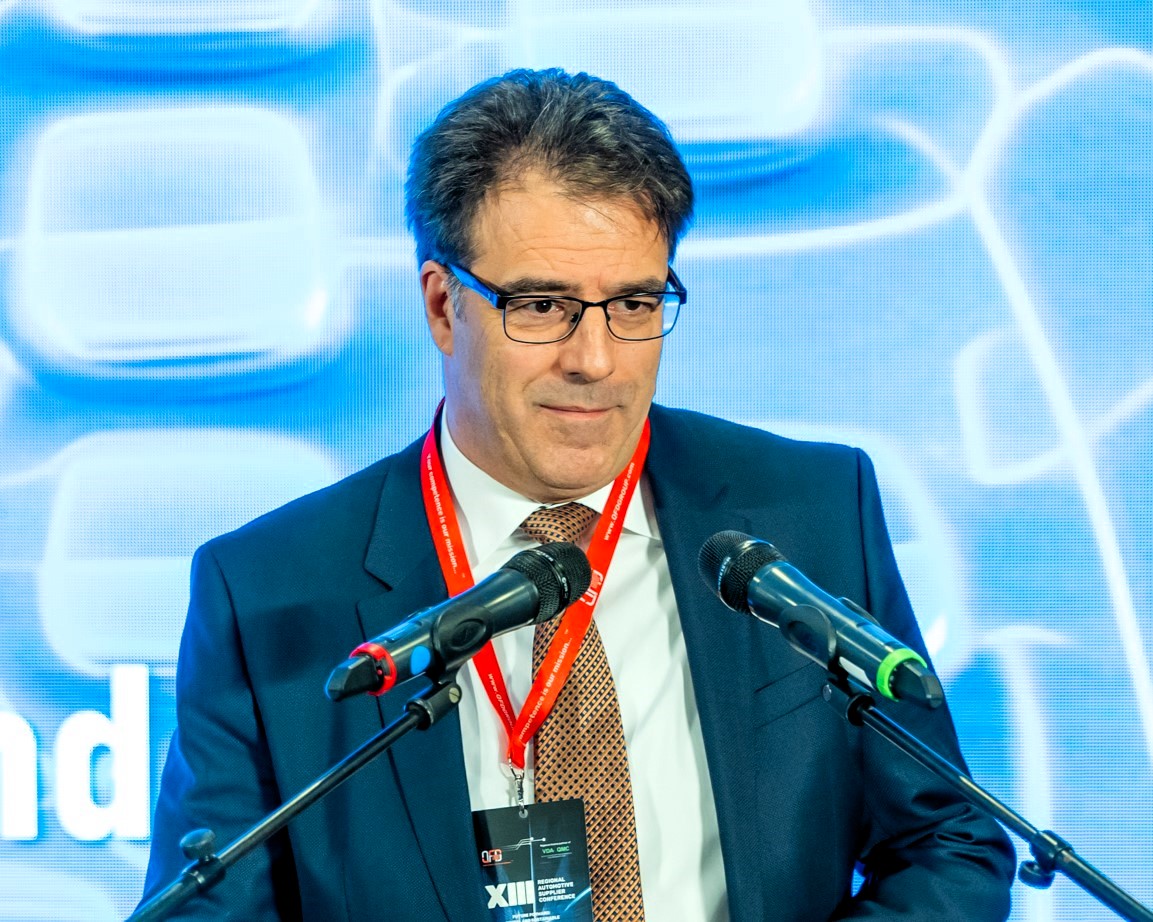Technological Breakthrough or Disappointment? Dr. Zsolt SZALAY’s Presentation at the XIII Regional Automotive Supplier Conference
On October 1st, the XIII Regional Automotive Supplier Conference, one of the largest annual events in the industry, was held at the Aquaworld Resort in Budapest, bringing together more than 270 automotive leaders and experts. Among the high-ranking representatives of the industry’s key players was Dr. Zsolt Szalay, Head of the Department of Automotive Technologies at BME, who delivered a compelling presentation. His speech clearly outlined the technological advancements in autonomous vehicles and the complex challenges facing future transportation systems. According to participant feedback, Dr. Szalay’s presentation received top ratings, making it the most successful and popular program of the conference.

Bridging the Gap Between Expectations and Reality
Dr. Zsolt SZALAY began his speech by recalling a 2007 meeting with the European Commission, where the potential of autonomous vehicles was met with skepticism. Since then, industry expectations have shifted significantly: in 2017, many predicted that driving licenses would soon become obsolete. However, in 2024, autonomous vehicles have yet to make a significant appearance on public roads. Dr. Zsolt SZALAY pointed out that beyond technological progress, regulatory and societal challenges also hinder the widespread adoption of autonomous vehicles.
Levels of Autonomous Vehicles: Where Do We Stand Now?
Dr. Zsolt SZALAY evaluated the development of autonomous vehicles using the SAE (Society of Automotive Engineers) standards, presenting the six levels of automation ranging from zero to full autonomy. He described the current state of technological progress as being in the “disillusionment phase,” where initial hype has given way to the realization that the technology and regulatory environment are not yet ready for widespread implementation.
Software Takes Center Stage: The Future is Software-Defined Vehicles
Dr. Zsolt SZALAY highlighted that over 90% of modern vehicle functions are now software-based. The competition among automakers and tech giants is centered on Software-Defined Vehicles, which are not just technological devices but comprehensive mobility systems. “The vehicles of the future will no longer be simple mechanical structures but integrated software systems,” stated Dr. Szalay.
Social and Legal Challenges of Autonomous Vehicles
One of the biggest challenges of autonomous transportation is addressing insurance issues. According to Dr. Szalay, liability in autonomous vehicles will shift from individual drivers to manufacturers, potentially transforming the insurance market. He also emphasized that while autonomous vehicles may reduce the number of road accidents, they could also create new types of accident scenarios that human drivers would handle differently.
Innovation Through University and Industry Collaboration
In closing his presentation, Dr. Zsolt SZALAY stressed the importance of close collaboration between university research and industrial innovation. BME aims to integrate its world-class research results directly into education and make them valuable to the industry. He highlighted the spin-off companies established by their department, such as DriveByCloud and iMotionDrive, which offer groundbreaking solutions in autonomous transportation and vehicle control.
The Road to Autonomous Vehicles: A Long Path Ahead
Dr. Zsolt SZALAY provided a realistic outlook on the future of autonomous transportation: “The technology, regulatory frameworks, and societal acceptance still face challenges, but by the end of the decade, we may see partially self-driving vehicles on highways.” His presentation emphasized that while the rollout of autonomous vehicles is slower than expected, continuous research, development, and innovation are laying the groundwork for a more sustainable and safer transportation future.
During the event, the BME Formula Racing Team showcased their race car, designed by students from the Budapest University of Technology and Economics (BME) and built for the Formula Student international competition. The team competes in both electric and autonomous categories, demonstrating outstanding performance in the latest technologies.

The Formula Student series sees nearly 600 university teams from around the world compete annually with cars they design and build. Hungary’s first Formula Student team, the BME FRT, has been a key player in this competition for years. Their goal is to continuously enhance their race car designs with innovative solutions, thereby contributing to the advancement of future mobility technologies. The team members, who study various engineering and economic disciplines, gain valuable practical experience through the project.
The research presented was funded by the European Union under the National Laboratory for Autonomous Systems (RRF-2.3.1-21-2022-00002)


